|
I felt like testing the portability, and making music in a garden. So I made one of the pieces here at the Adelaide Botanic Gardens, sitting on a log. Actually worked really well.
I've decided to finish this phase tomorrow with one last piece - totaling 12 in 12 days. A few considerations on the music of Messiaen - a fellow synaesthete - that resonate with the Streamland idea.
"The bird's ritournelle (ritornello) not only defends a terrain, it also establishes continuously the terrain by encircling it with song. It is the bird's "song of the earth," linking place and color with sound, weaving together ornamented terrain (patterns of leaves, etc.) with ornamented rhythm. The ritournelle is simultaneously pure expression and a returning "fold" that wards off death and other threats and becomes also a song of courtship." The relevance of this for Streamland is simply in the aesthetics - I get a sense of this 'ornamented terrain' often when I make music. Patterns of leaves, the light in the spaces between and the colour of bird-songs are recurring inspirations and atmospheres that I sense myself within. "If one reverses a retrogradable series as follows: 1,2,3,4, 4,3,2,1, then the entire unit of eight elements is itself non-retrogradable, palindromic… these palindromic devices were associated with magical conjuring formulae and Messiaen spoke of a "good magic" that concerns the ability of music to invoke the cosmos in a new way and to evoke and alter human emotion." This idea of the palindrome relates to the technique in the Streamland instrument of sample reversing - flipping the playspeed of a sample backwards and forwards, effectively mirroring fragments. Pickstock, C. 2007, “God and Meaning in Music: Messiaen, Deleuze, and the Musico-Theological Critique of Moderism and Postmodernism” in Sacred Music, 134.4, pp40-62 So the story goes that Schoenberg did not agree with his serial music being called "atonality" - his idea was to embrace all tonalities, not reject them. And so he preferred the term "pan-tonality".
So I've had an idea for a long time, and until I heard about this, I couldn't properly ground it. In the realm of audio, I've always had a problem with mixes that are too clean - sterile sounding - where the rawness is absent. On the other hand if a mix is too dirty, clarity and presence will eventually be lost to entropy. So I think a balance needs to be struck that embraces the spectrum from high to low fidelity. High and low fidelity have different characters, different timbres, and evoke different human responses. They expand the palette of audio production. To me this is a continuum that could be flowed through freely when making music - and much work has been done already with glitch music, chip-tune, bit-reduction effects, etc. I think the scope for exploring this further is huge, and great potentials exist for expressiveness through transformations and combinations of fidelity, if explored with conscious intention. Also, considerations of "parallax-fidelity" seem to be a natural extension of this. Layers of fidelity that add to the perception of a sound being closer or further away - moving at different rates, as does a parallax landscape. My experiments with Streamland are moving towards establishing the groundwork for this idea. I have a clear vision for the aesthetic atmosphere I aim to create with Streamland - even the name itself is indicative of this imaginary place I have in mind.
It is influenced by a lot of music, but by a few specific albums and artists in particular: The Dirty Three - Whatever You Love, You Are Van Morrison - Astral Weeks DJ Shadow - Endtroducing The Books - Lost and Safe The Avalanches - Since I Left You Four Tet - Everything Ecstatic Piano works of Erik Satie The significance of Whatever You Love, You Are, Astral Weeks, and Satie in particular is their focus on liberating tempo constraints. In all three cases they play with concepts of loose, fluid performance that results in a much more flowing natural aesthetic, and for me as listener conjures a deeply immersive atmosphere. Synaesthetically, there is also a link between all these albums (and Satie) - the colour schemes that I perceive in them are generally lush natural textures - green and leafy - with the exception of Since I Left You which is more of a deep blue oceanic theme, as it's cover would suggest. Even the highly electronic Everything Ecstatic seems to conjure this immersely arboreal atmosphere - and provides for me a conceptual bridge of how to openly transition back and forth from the constructed collages of DJ Shadow to the performative dialoguing of The Dirty Three. There are three main inspirations and contexts for this research – each of these headings are expanded upon in detail in the Streamland Blog:
1) Electronic Performative Spontaneity Kieran Hebden: Both in his work as Four Tet and in a duo with Steven Reid, Hebden’s album production (particularly Everything Ecstatic) and his improvisations (The Exchange Sessions Pt 1 & 2 and Tongues) are a blueprint for this research in terms of the range of sounds achieved and of the richness and coherence of sound achievable by a single electronic performer. Four Tet’s work greatly influenced the creation of my instrument Square Bender, which evolved into the Streamland instrument I used to perform the laptop improvisations. The Tongues documentary footage is a prime example of where Hebden has quite precise and spontaneous control over a diverse array of sounds and audio parameters – particularly where other performers would tend rely on pre-prepared and/or quantized loops or sequences. The Exchange Sessions albums and Tongues also feed into the next category, as all tracks on all three albums are live takes with no overdubs or edits. 2) Collaboration and the Streamlined Workflow Beck: The Record Club series of albums. Studio recorded cover-albums, each recorded from start to finish in a single day. This provides two key focal points for me: -The first is Beck’s interaction with other musicians, and the unique voices they bring to his oeuvre. There are also some valuable insights into when this doesn’t work so well, and the other musicians are subsumed into his aesthetic dominance. Reflecting on my own practice, I am aiming for true creative synergy, where the whole is greater than the sum of its parts -The second is the way recurring conventions are used – production techniques, performative audio effects, instrumentation, style/genre etc. How these are used with creative integrity…and if they are not, how could they be used better, or in a way that is more harmonious with the overall aesthetic arc? 3) The Aesthetic Goal The Dirty Three: The loose, flowing nature of their musical interactions is a strong aesthetic influence on my intended trajectory. Rhythmic precision is easy to achieve with loop-based sampling, and although I don’t intend to abandon the elegant simplicity of that, I do aim to augment it with the temporal flexibility this rich, flowing interaction, and the passionate intensity of The Dirty Three’s live performances. Their album Whatever You Love, You Are (2000) is my central reference point in this vein, and I intend to bring this flowing rhythmic and timbral interaction that is so evocative of nature into the electronic music realm. Van Morrison’s Astral Weeks (1968) also exhibits aspects of this quality towards which I’m aiming. Various precedents within the realm of sample-based electronic music that also display some elements of this aesthetic are DJ Shadow’s Endtroducing (1996) and The Private Press (2002), Four Tet’s Everything Ecstatic 2005), The Books’ Lost and Safe and (2005) Thought for Food (2002) and The Avalanches’ Since I Left You (2000) – however in all these examples the rhythmic quantization aspect is much more rigidly defined than what I intend to produce. I also intend to build upon ideas in developed in my own 2008 album Earthbound, which is closer to this intended Dirty Three aesthetic than the albums mentioned above, but whose ideas I had not since expanded upon as it is sampled almost entirely from copyrighted commercial recordings. |
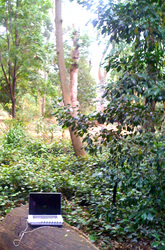
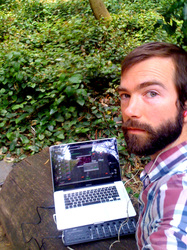
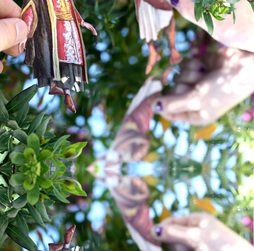
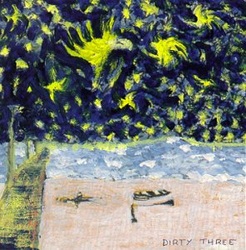
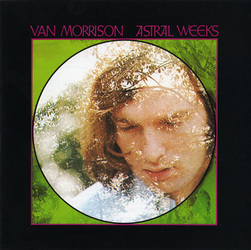
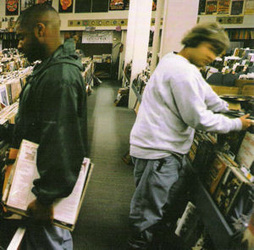

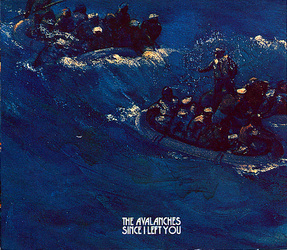
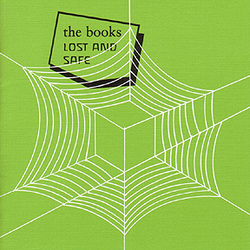


 RSS Feed
RSS Feed